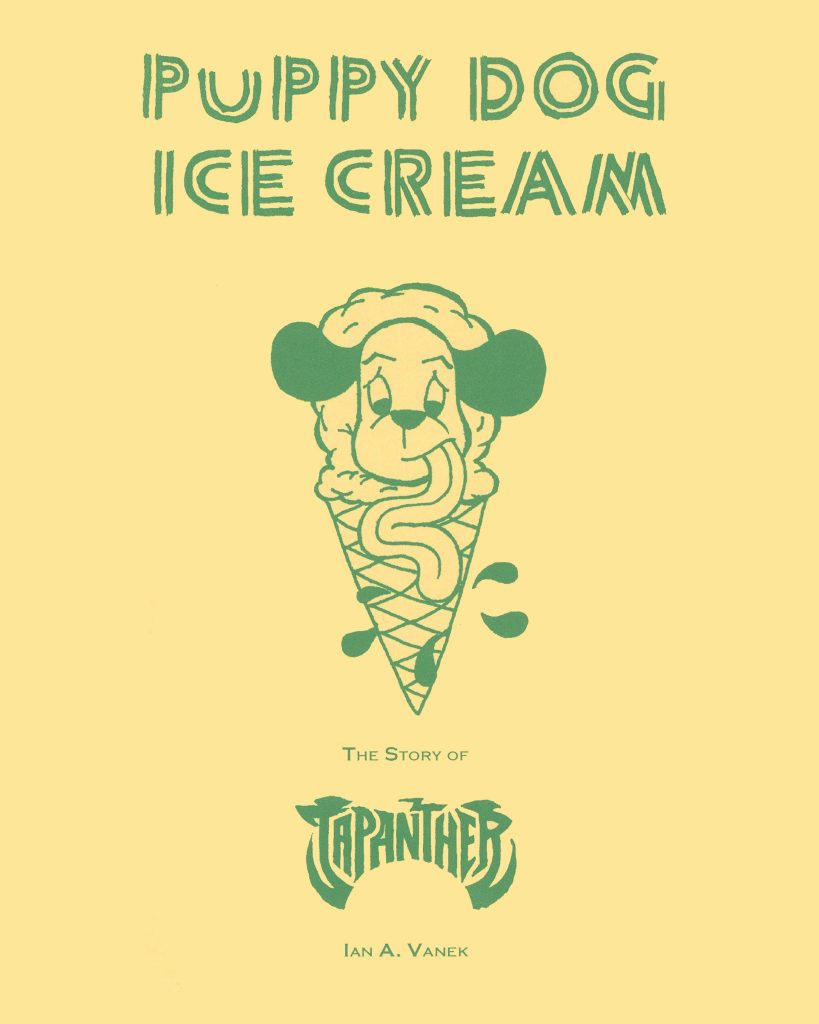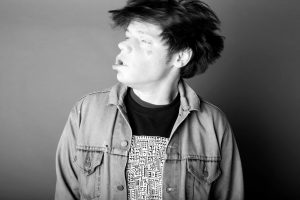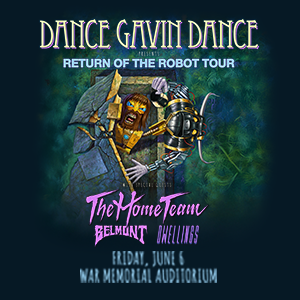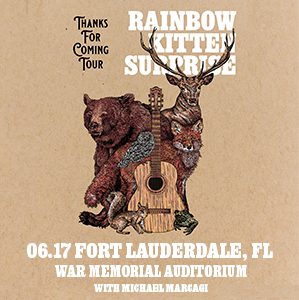Puppy Dog Ice Cream: the story of Japanther by Ian Vanek
by Tim Moffatt
Just past the dour days of 9/11 there was a renaissance of artists which emerged from Brooklyn at a very particular time. It will one day be synonymous with London in the 60’s, NYC in the 70’s and LA in the 80’s. The wealth of talent, charisma and intense fortitude to make art was inspiring. Japanther stood out; they were punk rock in that they couldn’t be classified, killer live, and constantly shifting.
Unfortunately, all parties end. So what happens when things stop? Kinetic energy must be channeled into something. Ian Vanek utilized a new band and a book about the 13 years spent in Japanther.
Here’s what he had to say about the experience:
 How did you get involved with Outlandish Press?
How did you get involved with Outlandish Press?
I met Kyle J. Osborne from Outlandish Press a long time ago at a festival in Indiana when he was a teen and Japanther was in full effect. Then we met again when Howardian played a bowling alley in Cleveland in 2016 or 17 and he took me to Steve’s Hot Lunch for a late meal. We talked about publishing my zine 99mm and I mentioned the project I was just starting at that time. I’m so elated to now call that project Puppy Dog Ice Cream and share it with readers some five years later.
The book sounds like an epic journey in a world that no longer exists, how did you find the transition from musician/participant to documentarian of a time and place?
99mm is a graffiti zine that’s been going for more than twenty years. So documenting temporal scenes, by any means, has always been an obsession. I wanted to write a book as a way of remembering the art and musical adventures I had a hand in. I love playing the drums and singing. It’s the most in the moment thing I know how to do. The only drawback seems to be forgetting some very epic times because I’d be charging a new wave elsewhere. So writing it all down as a map for future humans to find similar destinations seemed a worthy challenge. Writing Puppy Dog Ice Cream was a labor of love that took four years, an incredible editor named Will and ton of others who encouraged me and edited drafts.
What goes into making sense of your past and framing it to tell an engaging story?
I started with the goal of writing 5000 words for each year we did Japanther. Numbers play heavy in my art making. I wrote an outline and compared paper calendars, journals and posters to the outline and started chiseling a long form story about making art in New York City.
When you started Japanther, did you ever think it would lead to writing a book? Was there a bigger picture, or a happy accident? Can you tell us a little about art and ambition?
When we started Japanther in 2001 we had no expectations to be taken seriously by anyone ever. Legacy and nostalgia remain poison to the idea of Japanther. Writing an ending to the story seemed appropriate given our abrupt ending. Much like the band Crass, all good ideas need a set ending. It can be hard to dismount successfully but it remains of utmost importance.
Getting Penny Rimbaud to write the intro is a get! Are there any other luminaries that make an appearance in the book, that you might want to talk about?
Penny and Gee were very generous with us as fellow artists. We did a numberof collaborations with them and having Penny write the intro chapter feels likea huge gift. The author JT Leroy wrote ablurb on the back of the book. She’s as epic as luminaries get. Lots of incredible people wrote blurbs for the book. Dawn Riddle, Jah Jah Brown, Darryl Nau and Lauren Cerand are just a few “witnesses” that come to mind off the top of my head.
What is your take on Brooklyn today as opposed to the Brooklyn of 2001?
Brooklyn is an ever changing fiscal colony on an archipelago power point. For that reason I will be forever obsessed with the energy it is capable of producing. Of course its not the same as it was in 2001 but the interesting spaces are just shifting.That being said, I feel extremely blessed to have witnessed the city in the chapter that I did. I feel like I’m forever sliding under the door as it closes in the “Temple of Doom.”














